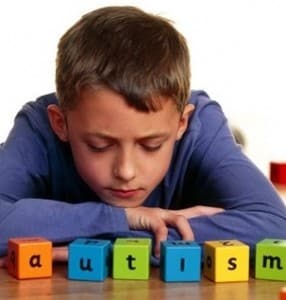 In the autism diagnosis criteria, there is a great deal of emphasis placed on the social abilities of a child. However, most parents of children with autism know there is so much more to their child’s symptoms than just social impairments. Their child may wince or even scream when they hear certain sounds. They may become hyperactive, afraid or even combative after being in a crowded place with lots of movements or lights and sounds. This knowledge, innately known by many parents of children with autism, has now been backed by a group of scientists from San Diego State University’s Brain Development Imaging Laboratory.
In the autism diagnosis criteria, there is a great deal of emphasis placed on the social abilities of a child. However, most parents of children with autism know there is so much more to their child’s symptoms than just social impairments. Their child may wince or even scream when they hear certain sounds. They may become hyperactive, afraid or even combative after being in a crowded place with lots of movements or lights and sounds. This knowledge, innately known by many parents of children with autism, has now been backed by a group of scientists from San Diego State University’s Brain Development Imaging Laboratory.
Aarti Nair, a student in the SDSU/UCSD Joint Doctoral Program in Clinical Psychology, and his research team analyzed more than 50 children, some with autism and some without. Published in the June edition of the journal Brain, the researchers combining functional and anatomical magnetic resonance imaging (fMRI) techniques and diffusion tensor imaging (DTI) to examine the connections between the thalamus (a structure deep in the brain responsible for sensory motor functions like vision, hearing, movement control and attention) and the cerebral cortex (the brain’s outermost layer).
Through their analysis, Nair and his colleagues identified a faulty connection between these two structures. And it is because these pathways are affected that researchers suggest these two parts of the brain fail to communicate effectively.
“This impaired connectivity suggests that autism is not simply a disorder of social and communication abilities, but also affects a broad range of sensory and motor systems,” Dr. Ralph-Axel Muller, an SDSU professor of psychology who was the senior investigator on the study told Science Daily.
In addition, study authors believe the developmental disturbances found in the structure and function of the thalamus may be linked to the social and communicative impairments often seen in autistic individuals. These impairments are the most frequently noted, and they are often the most disturbing in regards to lifestyle.
However, the authors say their findings, along with the growing studies highlighting both motor and sensory impairments in autistic individuals, may indicate that the current diagnostic criteria is lacking. Currently, sensory and motor impairments aren’t recognized on the criteria, and these are, quite obviously, impairments that can affect an individual’s quality of life.
Related Articles:
- Researchers Bringing Different Technologies Together to Find Treatment for Autism
- Breastfed Babies Less Anxious and More Likely to Remain Socially Connected, Study Says
- Breakthrough Cooling Treatment Saves Life and Prevents Brain Damage for Baby Mila







This theory was being postulated on ASC parent support boards almost 10 years ago. It supports the central hypothesis of the Intense World theory which suggests that sensory processing differences are responsible for most “autistic” behaviours – that many of these behaviours are a response to too much sensory data that cannot be processed fast enough or filtered properly and becomes overwhelming.
My own work with young adults in this field has led me to use sensory profiling as a first tool to help build an awareness of their own differences in order to help them manage their exposure and adjust their strategies for dealing with it.
A few years ago there was a move to try to get the DSM V board to include sensory processing problems in the criteria but unfortunately this is one of the first studies to confirm it and it came too late.
Thank you, Mepi. I don’t doubt that parents and support groups have known this information for quite some time. My son didn’t receive a diagnosis until he was 10, but we had severe and frequent meltdowns in the years leading up to that diagnosis. Once we received it, and he started receiving therapy, we started being able to recognize the things that were most likely causing some of his meltdowns. For example, he would have a meltdown every time we went to the store. Over the past couple of years, we’ve noticed that a screeching cart will cause him to wince and cover his ears, sometimes even to cry out. It’s those little things that we didn’t understand before that lead me to agree with the idea that sensory issues cause a number of the autism behaviors. Like you, I wish that were included in the diagnosis because it’s obvious that it’s a big part of his life, and I’m sure I’m not the only parent who feels this way.